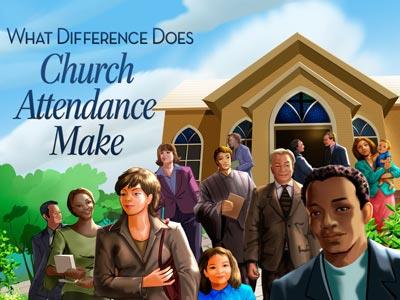-
The Church Of The New Testament - Part 7c Series
Contributed by Sam Mccormick on May 15, 2018 (message contributor)
Summary: Part 7C, for the purpose of using space coveniently, combines the subjects--although not directly related--of (1) false Christs, prophets, and teachers and (2) various gifts and their accompanying functions.
This 13-part series of classes has been many years in the making. About 25 years ago I began in earnest to examine the features, character and characteristics of the church as it existed in its earliest years. As I sometimes do, I kept my notes all along the way, and this series of classes is to a large extent the product of those years of on-and-off studying the subject. Several things in my experience contributed to my interest in making this 25-year study which I will mention along the way, and those go much further back.
There may be some difficulty in using the individual parts of this series separately, although viewer are free to do so if it serves their purposes. But to those whose interest is in knowing what the church was like in its earliest years, I recommend starting with Part 1 - Introduction to the Church of the New Testament and proceeding through the parts consecutively.
I have prepared some slides that I used in presenting the series in a classroom setting before adapting it to use as sermons. I have left my cues to advance slides or activate animations in the notes as posted on Sermon Central. If anyone is interested in having the PowerPoint files with the slides, I will be happy to send them. Send me an Email at sam@srmccormick.net and specify what part(s) you are requesting. Be sure that the word “slide” appears in the subject line. It may take me several days to respond, but I will respond to all requests.
THE CHURCH OF THE NEW TESTAMENT
OUTLINE OF THE STUDY
I. Introduction
II. The Origin of the Church
III. What is the church?
IV. The First Christians
V. Authority in the First Century Church
VI. Problems in the New Testament Church
VII. How the Church Functioned
A. Introduction to Functions
B. Apostles, Prophets, and Teachers
C. False Apostles, Prophets, and Teachers & Various Gifts and Functions
D. More Gifts and Functions
E. Evangelists, Preachers, and Ministers, Servants and Deacons
F. Pastors, Elders, Bishops, etc.
VIII. How the Church Worshiped
===================================
False Christs, Apostles, Prophets, and Teachers
Christianity took hold in a big way in Judea, Samaria, Galilee, and Syria; then spread across Cilicia, Pamphilia, Galatia, eventually into what was then called Asia, and on to Europe. Later we expect to explore the spread of the early church.
As you might expect, people with motives of their own began to make false claims.
• Some feared that the gospel of Christ would topple them from political power
• Some saw a parade and wanted to be in front of it
• Some found it hard to accept that the Sinai law had been eclipsed by the Christian faith, still clung to it
Jesus warned about false Christs and false prophets
• For false Christs and false prophets will arise and will show great signs and wonders, so as to mislead, if possible, even the elect. (Matt 24:24)
• Defending his apostleship to the Corinthian church, Paul wrote that some men, desiring the opportunity to be equal with Paul, were disguising themselves, and masquerading as apostles of Christ (2 Cor 11:12-13).
• The church in Ephesus had the same problem, and had tested those who called themselves prophets, and found them to be false (Rev 2:2)
• On his first missionary tour, Paul and Barnabas went through Cyprus (where today there’s a financial crisis). They encountered Bar-Jesus, a false prophet at Paphos (Acts 13:6)
• John wrote that “many false prophets are gone out into the world. (1 Jn 4:1)
• Peter wrote about false prophets and false teachers
But false prophets also arose among the people, just as there will also be false teachers among you, who will secretly introduce destructive heresies, even denying the Master who bought them, bringing swift destruction upon themselves. (2 Pet 2:1)
• Consequently, there was a proliferation of teachers with conflicting and wrong doctrines, all claiming to be speaking the “gospel truth,” may have prompted James to caution:
Let not many of you become teachers, my brethren, knowing that as such we will incur a stricter judgment. (Jas 3:1)
Stricter judgment for what? Accidentally or deliberately teaching falsely.
• False teaching was poisonous to the early church.
One can easily understand why false teaching was prevalent.
It was a fertile time for Satan to send pompous, self-impressed charlatans with claims of access to God, and possession and ownership of truth.
With the New Testaments yet unwritten, everyone could claim to be a teacher, a prophet, or even the Christ.
Read 1 Tim 1:5-7
Teachers who espouse and spread false doctrines will always appear to be positive they are right. But confidence does not make rightness. One may be very confident that a false thing is true.

 Sermon Central
Sermon Central



